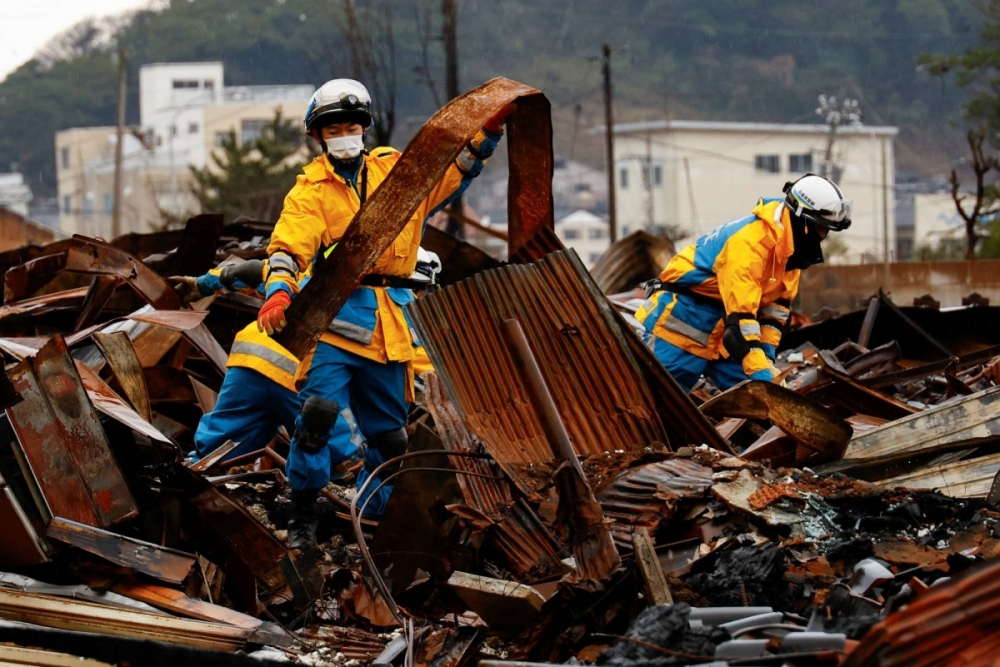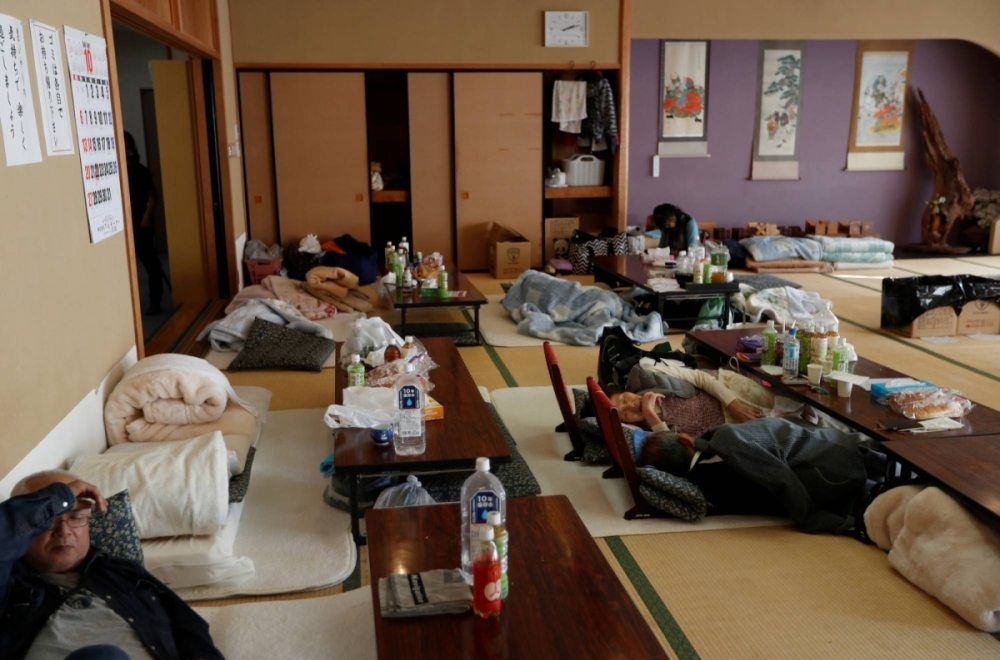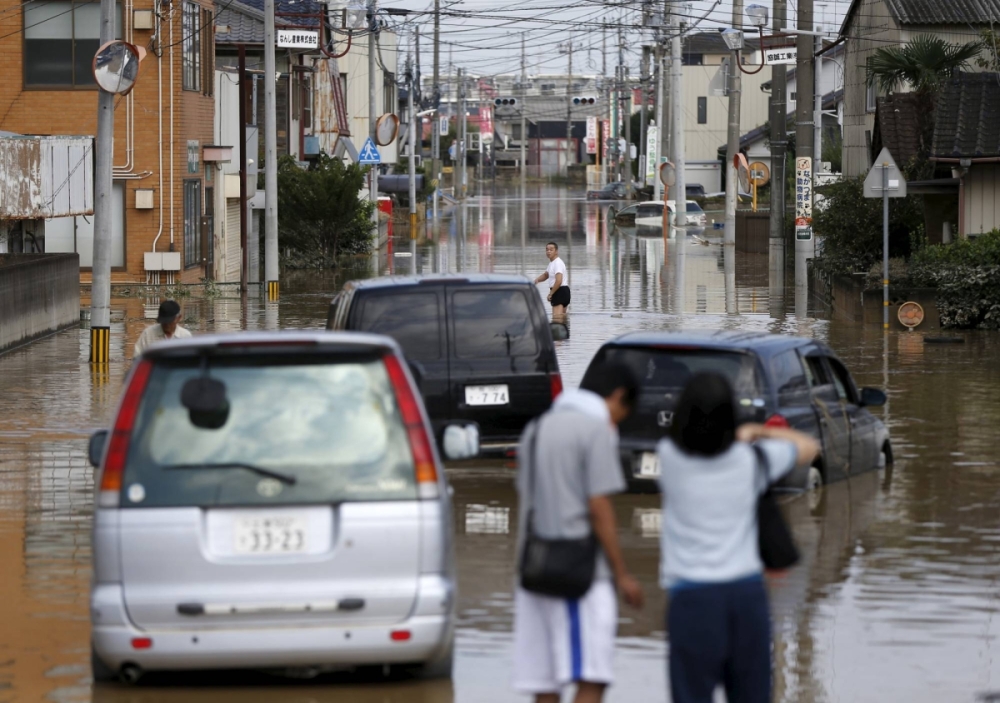The frequent nature of those disasters has led the nation to construct an experience in catastrophe resilience that has headed off the sort of injury seen in different international locations from related occasions. Despite that information, latest analysis exhibits Japan nonetheless suffers from a few of the highest prices on the earth — and that local weather change, which is primarily attributable to the burning of fossil fuels, will probably compound these prices additional.
Japan’s invoice for local weather change-related damages within the decade by 2023 got here in at $90.8 billion, behind solely the United States, China and India — all three of which dwarf Japan’s inhabitants and land mass — in line with a report compiled late final yr on behalf of the International Chamber of Commerce.
That could quickly be seen as small fry.
Under present international local weather commitments, the whole value in local weather damages by 2050 might quantity to ¥952 trillion ($6 trillion), in line with a December evaluation — excess of the nominal worth of the complete economic system, ¥591.9 trillion, as calculated by the Cabinet Office final yr.
Disaster danger
From the Noto quake final yr and Typhoon Hagibis in 2019 to the March 2011 earthquake and tsunami, Japan has seen its fair proportion of pure disasters over the previous quarter century. And warnings final summer time of a Nankai Trough megaquake served as yet one more reminder that extra are all the time in retailer.
Unsurprisingly, that makes Japan one of the disaster-affected international locations on the earth.
The nation ranked sixth on the Disaster Risk Index compiled by international telecommunications firm Intersec late final yr, which was based mostly on a per capita comparability of the deaths, accidents and financial injury attributable to disasters throughout practically 160 international locations from 2000 to 2024.
Japan’s rating was pushed by $2.35 trillion in financial losses and 543 deaths and accidents when adjusted for the nation’s estimated inhabitants of 124 million. In truth, the outcomes, which point out how the identical absolute variety of casualties can have a deeper impression on small international locations, underscore Japan’s success in containing the human toll of pure disasters.
“If the rankings centered solely on financial injury per capita, Japan would probably rank greater,” mentioned Charlotte Cardona, advertising and communications director at Intersec.
The March 2011 catastrophe performed a big function in these prices, however geography additionally has an necessary bearing on Japan’s danger issue — island nations made up the vast majority of the highest 10 most “catastrophe impacted” international locations.
Geographic vulnerability attributable to longer coastlines, a focus of property introduced on by extra densely-packed city areas, in addition to useful resource limitations typically attributable to smaller populations and land mix to make islands exceedingly susceptible to catastrophic injury, Cardona explains.
Cardona mentioned the report “underscores the important want for enhanced preparedness” in high-risk international locations.
“While the research highlights the devastating human and financial tolls, it additionally factors to the significance of investing in early warning techniques, infrastructure resilience and catastrophe response methods,” Cardona mentioned. “Such investments are important as a result of they’ll save lives, cut back financial losses and defend susceptible communities from the rising frequency and depth of pure disasters.”
The worth of inaction
The significance of investments like these are being harassed by new research that predict future excessive climate occasions will enhance local weather change-related damages.
In the lead-up to COP29 final November, a research commissioned by the International Chamber of Commerce analyzed practically 4,000 excessive climate occasions internationally that occurred from 2014 to 2023. The financial losses to the worldwide economic system attributable to these occasions by way of bodily injury and human deaths amounted to $2 trillion, the evaluation discovered.

Policemen seek for victims in Wajima, Ishikawa Prefecture, in January 2024 following a robust quake on New Year’s Day.
| REUTERS
The research centered solely on what it labeled “acute impacts,” which it categorised as usually shorter-term excessive climate occasions, resembling floods, hurricanes and wildfires. It discovered these occasions are occurring extra incessantly at greater ranges of depth as international temperatures rise and atmospheric and hydrological patterns shift.
“Climate change shouldn’t be a future drawback. Its impacts are being felt within the right here and now,” John Denton, secretary-general of the chamber, wrote within the introduction of the report.
If the “power impacts” of local weather change — resembling excessive temperatures, sea degree rise and modifications in precipitation patterns — on ecosystems, agricultural productiveness and human well being have been thought of within the research, the reported losses to the worldwide economic system would probably have been greater.
In phrases of nations, the $90.8 billion value the research discovered for Japan positioned it between India at $112.2 billion and Germany at $65.4 billion.
“There is an actual and tangible value to delaying the motion wanted to stem local weather change,” Denton wrote. “From a enterprise perspective, the urgency of coordinated and collective motion to speed up emissions reductions and construct resilience to altering climate patterns can’t be overstated. Simply put, the time for motion is now.”
Globally, whole losses from pure disasters amounted to $320 billion in 2024, with $140 billion of those insured, mentioned insurer Munich Re in a report Thursday. Those have been the fifth and third highest losses since 1980, and each have been considerably greater than 10- and 30-year averages.
“Climate change is displaying its claws,” the world’s high insurer mentioned.

People relaxation at an evacuation middle within the aftermath of Typhoon Hagibis in Date, Fukushima Prefecture, in October 2019.
| REUTERS
Even larger prices might be in retailer.
If present international local weather coverage trajectories proceed, local weather change would result in an virtually 10% annual hit to Japan’s gross home product, in line with new financial modelling by the Asia Investor Group on Climate Change revealed in December, which used information from greater than 140 central banks, together with the Bank of Japan.
The ¥970 trillion in whole losses from local weather change by 2050 would translate to “tons of of 1000’s of yen being misplaced by Japanese households yearly,” the report discovered. The impression on Japan is forecast to be greater than it’s for the U.S. and Europe.
While these predictions are grim, Japan has the potential to make a big contribution to greenhouse fuel emissions reductions each domestically and globally, given its attainable management in areas resembling batteries and offshore wind, the report mentioned.
The report said that below a internet zero state of affairs — that means carbon emissions are decreased to a degree that may be absorbed by nature and different elimination measures — the economic system would see a ¥13.6 trillion enhance yearly by 2050. Annual financial savings by that time in contrast with the state of affairs below present local weather insurance policies can be about ¥40 trillion.
At the identical time, Japan can also be main Asia in monetary help for the United Nations-led Loss and Damages Fund for creating international locations equally susceptible to local weather change-fueled disasters. While Japan’s contribution is a mere $10 million and the whole fund of roughly $720 million is usually criticized for being not practically sufficient — notably given developed international locations’ historic accountability for planet warming emissions — such funding underlines simply how broad ranging the prices of local weather change are.

Local residents wade by a residential space flooded by the Kinugawa river, attributable to hurricane Etau, in Joso, Ibaraki Prefecture, in September 2015.
| REUTERS
Japanese households are already feeling the impression of local weather change by the elevated value of insurance coverage.
In October 2024, the nation’s 4 main nonlife insurance coverage corporations raised fireplace insurance coverage premiums for people by a mean of about 10% nationwide — the fourth enhance since 2019 — because of the elevated monetary burden from pure disasters. In an announcement in 2021 that an advisory fireplace insurance coverage charge can be raised, the General Insurance Rating Organization of Japan explicitly tied the transfer to local weather change driving a better danger of pure disasters.
Indeed, the Insure Our Future local weather marketing campaign group mentioned in a report on the finish of final yr that “local weather change had accounted for an estimated $600 billion, or over a 3rd, of world insured climate losses” from 2002 to 2022.
“Our planetary physique is on life help with organ failures on the horizon,” mentioned Risalat Khan, writer of the report and a senior strategist for Insure Our Future. “It is inside our energy to forge a typical mission throughout keen governments, daring business voices and a strong civil society and media to chop emissions immediately and insure tomorrow.”




